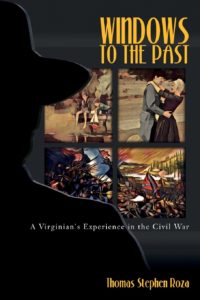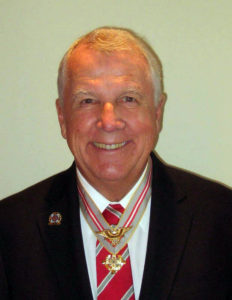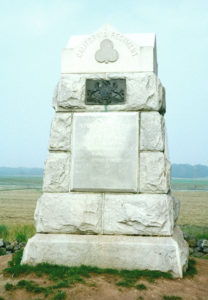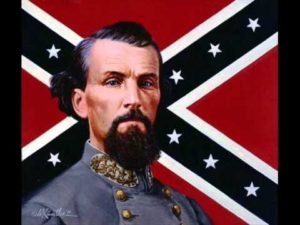A Congress of Civil War Round Tables being held in Centreville, Virginia, September 16, 2017.
Tom Roza’s Civil War Novel Published
Here is an announcement from our group secretary, Tom Roza:
 It is with great pleasure and deep humility that I announce that my historical novel on the American Civil War entitled Windows to the Past: A Virginian’s Experience in the Civil War is now available on Amazon.com!
It is with great pleasure and deep humility that I announce that my historical novel on the American Civil War entitled Windows to the Past: A Virginian’s Experience in the Civil War is now available on Amazon.com!
I have been a student of the American Civil War since 1960. I have conducted extensive research on this great conflict and toured numerous battlefields to see firsthand where millions of Americans fought our Civil War. But, through my over 50 years as a student of this significant event, it was not the battles, not the politics, and not the armaments that piqued my interest – it was the people; the everyday men and women from all parts of the country that dealt with and/or fought for what they believed in. And, those brave young soldiers on both sides that found the indescribable courage to give their lives for the values that made them who they were.
Windows to the Past is the story of one man’s journey through one of the most turbulent, yet fascinating periods in the history of our Country. The main character’s life story, told to his great-granddaughter, embraces all the meaningful periods of his life from childhood through to his twilight years as he searches for the answer to the question: “Did I make a difference in the lives of the people I touched and loved?”
I would be honored if you considered purchasing my novel. Here is a link to the listing: Amazon.com.
Or, once you are in the Amazon.com web site, you can enter the title ““Windows to the Past: A Virginian’s Experience in the Civil War”.
I pray that my storytelling efforts regarding family, friends, dealing with conflict, and finding peace of mind in some small way resonates with you as the reader.
Tom
PS: An electronic version has been developed in conjunction with Amazon.com and is now available. Purchasing this version of my novel will allow readers to use a variety of handheld devices (Kindles, smart phones, etc) . Here is a link to the electronic version: Amazon.com
2017 West Coast Civil War Round Table Conference
The 2017 West Coast Civil War Round Table Conference has been announced. Sponsored by Sacramento Civil War Round Table, this year’s theme is
Lesser Known Civil War Battles
November 10–12, 2017, Crowne Plaza Hotel, Sacramento
Download the flyer and registration form: 2017 West Coast Conference Flyer
The speakers will be:
- William C. Davis: Retired in 2013 as Professor of History and Executive Director of the Virginia Center for Civil War Studies at Virginia Tech University. He is the author or editor of more than 60 books on the Civil War and Southern history, and consultant and commentator for A&E’s “Civil War Journal,” and several other television and film productions.
- Dr. Brian S. Wills: Director of the Center for the Civil War Era at Kennesaw State University. Dr. Wills is a nationally recognized Civil War historian and author of books on Civil War topics.
- Thomas Cartwright: Is a leading authority and author on the Battle of Franklin who conducted tours of Western Theater battlefields for 20 years. Appeared on many TV shows and is a frequent CWRT speaker.
- Jim Stanbery: Professor of Political Science and History at Los Angeles Harbor College, and speaker at the West Coast Civil War Conference for more than twenty years. Is a frequent CWRT speaker.
- Theodore Savas: Is an attorney, adjunct college instructor, award-winning author, Partner and Managing Director of Savas Beatie LLC. He specializes in military history and the American Civil War.
- Ron Perisho: A member of the Sacramento CWRT and Center for Civil War Photography (CCWP), CoEditor of “Gettysburg in 3-D,” and a Soils Engineer who has collected Civil War Photography for 30 years.
Meeting of July 25, 2017
Howard Jones on “John Paul Jones – An American Hero”
John Paul Jones took the fight for American independence to the British Isles during the Revolutionary War. The epic battle between the American Ship, Bonhomme Richard, and the British ship, Serapis, is legendary in naval history. His ultimate victory became the basis for the creation of the United States Naval Academy and a world-power American Navy.
 Howard is the President of the Peninsula Civil War Round Table. He is a Marine Corps Veteran and a graduate of the University of Oregon. He is the immediate Past Commander General of the Military Order of the Stars and Bars. He is a former President of the Silicon Valley Chapter of the Sons of the American Revolution. In addition, he served for 12 years as the Public Member of San Mateo County’s Local Agency Formation Committee. Howard frequently gives presentations about American history to elementary grade school children and heritage groups such as the DAR, SAR, and the UDC.
Howard is the President of the Peninsula Civil War Round Table. He is a Marine Corps Veteran and a graduate of the University of Oregon. He is the immediate Past Commander General of the Military Order of the Stars and Bars. He is a former President of the Silicon Valley Chapter of the Sons of the American Revolution. In addition, he served for 12 years as the Public Member of San Mateo County’s Local Agency Formation Committee. Howard frequently gives presentations about American history to elementary grade school children and heritage groups such as the DAR, SAR, and the UDC.
Quiz for July 25, 2017
Civil War Quiz – What Do You Know About Confederate Railroads During the Civil War?
Q#1 – Prior to the Civil War, what was the primary purpose of railroads in the South?
Q#2 – At the outset of the war, the Confederacy actually possessed the third largest set of railroads of any nation in the world. Approximately, how many miles of railroad track existed in the South?
Q#3 – At the beginning of the Civil War, what action by the Confederate government had an adverse impact on the profitability of Southern railroad companies?
Q#4 – Lucrative government contracts were doled out to rail operators with lines supplying men and arms to the front line of Tennessee and Virginia. What was the payment rate railroads charged?
Q#5 – What were the two key railroad deficiencies the Confederacy suffered from?
Q#6 – What condition significantly crippled the ability to transport troops and supplies in the South?
Q#7 – Built in 1862, what was the name of the 5.5-mile railroad spur built off the Orange and Alexandria Railroad at Manassas Junction to supply the Confederate defenses in northern Virginia?
Q#8 – In 1863, what action did the Confederate government take regarding the railroads?
Q#9 –What other legislation passed by the Confederate Congress had a significant adverse impact on railroad passenger traffic in the South?
Q#10 – As the war progressed, the problem of railroad supplies had become increasingly acute, especially with respect to the already small supply of engines and cars. Stressed by overuse, lacking material to make repairs, and the conscription of men who could make them, where did railroad operators turn to for these supplies and equipment?
Q#11 – What was the main reason Confederate railroad operators did not seek, nor build, alternative sources of iron for rail construction and repair?
Q#12 – Where did the Confederacy get the rails for replacement track?
Q#13 – When the Confederate government attempted to rectify the problem of the absence of rail connections, what problems did it encounter?
Q#14 – What action by retreating Confederate forces further exasperated the South’s railroad capability?
Q#15 – Attempts were made to enlarge the Confederacy’s rail system by adding or connecting lines. Of the three major rail projects the Confederate congress proposed and funded, only one of them was completed – what was the name of that project?
Meeting of June 27, 2017
Bob Burch on “California in the Civil War: Other California Units”
 This is the fifth of a twelve-part series on California and the American Civil War. This presentation will explore the history of those units that served in the Eastern Theater during the American Civil War that enlisted a good portion of their recruits from California or had that state’s name in their unit designation. Nearly ten percent of Californians who volunteered during the war did so into units from other states. They did so for a variety of reasons including the desire to represent their state during the war to preserve the Union. Consequently these “other California units” represented their state continuously from the Battle of First Bull Run until General Lee’s surrender at Appomattox four years later.
This is the fifth of a twelve-part series on California and the American Civil War. This presentation will explore the history of those units that served in the Eastern Theater during the American Civil War that enlisted a good portion of their recruits from California or had that state’s name in their unit designation. Nearly ten percent of Californians who volunteered during the war did so into units from other states. They did so for a variety of reasons including the desire to represent their state during the war to preserve the Union. Consequently these “other California units” represented their state continuously from the Battle of First Bull Run until General Lee’s surrender at Appomattox four years later.
Eventually Californians served in five other states’ volunteer regiments. On the West Coast these units were the 1st Washington Territory Infantry and 1st Oregon Cavalry Regiments. On the East Coast these were the 32nd New York Infantry Regiment (aka “California Regiment”), Baker’s Brigade (aka “California Brigade”) of four regiments, and the 2nd Massachusetts Cavalry Regiment’s “California Hundred” and “California Battalion”.
Along the way we will meet several forgotten Californians who served their country well. Colonel Roderick Matheson from Healdsburg who fought at First Bull Run and later died from wounds received at the Battle of Crampton’s Gap. Colonel Francis Pinto of San Francisco who commanded regiments during the Peninsula, 2nd Manassas, Fredericksburg and Chancellorsville Campaigns. Major Archibald McKendry who commanded the California Battalion and eventually the 2nd Massachusetts Cavalry Regiment when only a captain. Captain James Sewell Reed of the California Hundred who died while leading his unit against Mosby’s partisans and Captain Hugh Armstrong who replaced him and led that company from Battle of Fort Stevens until Appomattox. And Captain Henry Crocker of San Francisco who participated in nine battle and was awarded the Congressional Medal of Honor for valor at the Battle of Cedar Creek.
Except for the “CAL 100” Cavalry, these units have disappeared from history despite the presence of the California Regiment’s monument on Cemetery Ridge at Gettysburg and mention in many original source documents from newspapers to the Official Records. This presentation will attempt to remember and honor their contribution to the Union cause.
Bob Burch is a native Californian, born and raised in Santa Clara County. He is also a lifetime student of the Civil War. He had the opportunity to visit many Civil War sites from Florida to Pennsylvania to New Mexico during his 30 year military career. Like many California CWRT members, he desires to understand his home state’s role in the war. He started collecting material for this presentation ten years ago and initiated a serious study 15 months ago. This series documents his research in great detail. Time allows only a few key points from each slide to be presented. Numerous period photographs and magazine drawings are included for visual effect with the intent of comprehending California’s role in the Civil War.
Quiz for June 27, 2017
Civil War Quiz: What Do You Know About the Post War Era and Reconstruction?
Q#1 – On May 2, 1865, still-president of the Confederacy Jefferson Davis held a Council of War in Abbeville, South Carolina. What was the purpose of this meeting and what was its outcome?
Q#2 – What was the estimated amount of debt incurred by the Southern States by the end of the war?
Q#3 – Southern Negroes were given a promise regarding their ability to own land on former plantations where they had worked as slaves. What was the name of this promise?
Q#4 –What name did President Andrew Johnson give to his post war plan for the nation? He did not call it Reconstruction.
Q#5 – In the years immediately following the Civil War, Southern legislatures began to pass discriminatory laws designed to preserve white supremacy. What were these laws called?
Q#6 – In response to President Andrew Johnson’s pro-Southern bias regarding his plans for treatment of the South specifically as it related to Negroes, Radical Republicans crafted and were successful in getting what amendment added to the US Constitution?
Q#7 – What was the most significant effect of the Reconstruction Act of 1867 passed over President Johnson’s veto?
Q#8 – During the first years of the Reconstruction period, approximately how many US soldiers were stationed in the South to enforce martial law?
Q#9 – What was the name given by the pro-Democratic Party newspapers for the state constitutional conventions held in 1867 throughout the South?
Q#10 – Through the various Reconstructions actions initiated by Radical Republicans to enable blacks to obtain elected political office, what Southern state was the first to elect a black person as Governor during Reconstruction?
Q#10 – How many articles of impeachment were filed against President Andrew Johnson in 1868? What were the three topics that the articles dealt with?
Q#12 – In the presidential election of 1868 won by Ulysses S. Grant, who was the Democratic Party’s candidate?
Q#13 – The Ku Klux Klan is the best known organization that used terror tactics against blacks. What was the name of the News Orleans-based organization that adopted similar terrorist tactics against blacks?
Q#14 – In the Spring of 1871, Congress passed the Enforcement Act in response to growing acts of terror by white supremacist groups in the South. What powers did this Act give President Grant ?
Q#15 – What was the last southern state to be readmitted to the Union?
Meeting of May 30, 2017
John Herberich on “Nathan Bedford Forrest and the 4th United States Cavalry”
 As the only Regular Cavalry regiment in the Western Theater, the 4th Cavalry became the primary nemesis of Forrest’s (and Wheeler’s) cavalry – from the earliest contact at Fort Donelson to the final cavalry charge at Selma, AL, with the final, tragic conclusion during the last week of the war.
As the only Regular Cavalry regiment in the Western Theater, the 4th Cavalry became the primary nemesis of Forrest’s (and Wheeler’s) cavalry – from the earliest contact at Fort Donelson to the final cavalry charge at Selma, AL, with the final, tragic conclusion during the last week of the war.
Quiz for May 30, 2017
Civil War Quiz – What Did The Northern Home Front Have to Deal With?
Q#1 – What was the estimated population of the northern states at the beginning of the Civil War?
Q#2 – The Civil War did not stifle immigration into the North. On average, how many people immigrated each year into the northern states?
Q#3 – The war caused a significant split in the Democratic Party. What two factions were created as a result of the split?
Q#4 – While many northerners were against slavery as being immoral, what was the prevailing opinion of Negroes by people living in the North?
Q#5 – At the beginning of the Civil War, what was the existing debt owed northern merchants by people and companies from the South?
Q#6 – The fear that the North would lose the Civil War mostly by financial default through the loss of the South as customers never really materialized – why?
Q#7 – To pay for the war, Congress began to print money as did the Confederate Congress. However, why was the North able to avoid the ruinous levels of inflation that beleaguered the South?
Q#8 – What inventions greatly improved the North’s agricultural capacity?
Q#9 – What discovery just prior to the war in 1859 provided the North with a source of income and wealth that helped pay for the cost of the Civil War?
Q#10 – When Congress passed legislation in 1862 authorizing conscription and the draft of men into military service, what were the age limits?
Q#11 – What was the justification provided by Congress for the $300 “commutation fee,” which allowed a person to be excused from the military service?
Q#12 – What was an unexpected adverse side effect of the draft?
Q#13 – What organization was founded with the assistance of Mary Livermore and George Templeton Strong to support sick and wounded soldiers of the U.S. Army during the American Civil War?
Q#14 – The elections of 1862 both for the House of Representatives and governors in six states were extremely volatile and divisive. What was the narrow margin that President Lincoln’s Republican party retained its role as majority party in the House?
Q#15 – What two major Northern military victories in the late summer/early fall of 1864 sealed Lincoln’s re-election bid?
Meeting of April 25, 2017
Tom Roza on “Nathan Bedford Forrest – First with the Most”
 South Bay Civil War Roundtable Secretary Tom Roza provides an intriguing and detailed examination of the life and career of one of the most polarizing figures and greatest cavalrymen of the Civil War, Confederate general Nathan Bedford Forrest.
South Bay Civil War Roundtable Secretary Tom Roza provides an intriguing and detailed examination of the life and career of one of the most polarizing figures and greatest cavalrymen of the Civil War, Confederate general Nathan Bedford Forrest.
Born July 13, 1821, in Chapel Hill, Tennessee, along with a twin sister, Forrest had very little formal education, yet he is remembered as a self-educated, brutal, and innovative cavalry leader during the Civil War and as a leading Southern advocate in the postwar years. Before the Civil War, Forrest had already amassed a fortune as a planter, real estate investor, and slave trader. He was one of the few officers in either army to enlist as a private and be promoted to general officer and corps commander during the war. Although Forrest lacked formal military education, he had a gift for leadership, strategy, and tactics. He created and established new doctrines for mobile forces, earning the nickname The Wizard of the Saddle.
After the Civil War, Forrest and most Southerners railed against the Northern-implemented Reconstruction effort. He was a pledged delegate from Tennessee to the New York Democratic National Convention of July 1868. He served as the first Grand Wizard of the Ku Klux Klan, but later distanced himself from the organization.
Tom Roza’s main interest in the Civil War has focused on what type of people fought in the war as opposed to the actual battles. The presentation on Nathan Bedford Forrest follows in line with most of Tom’s presentations on John Buford, Winfield Scott Hancock, Jeb Stuart at Yellow Tavern, A.P. Hill, and Robert Gould Shaw. Tom also presented an in-depth two part presentation of Robert E. Lee’s first invasion of the north in September 1862, which culminated in the Battle of Antietam.
